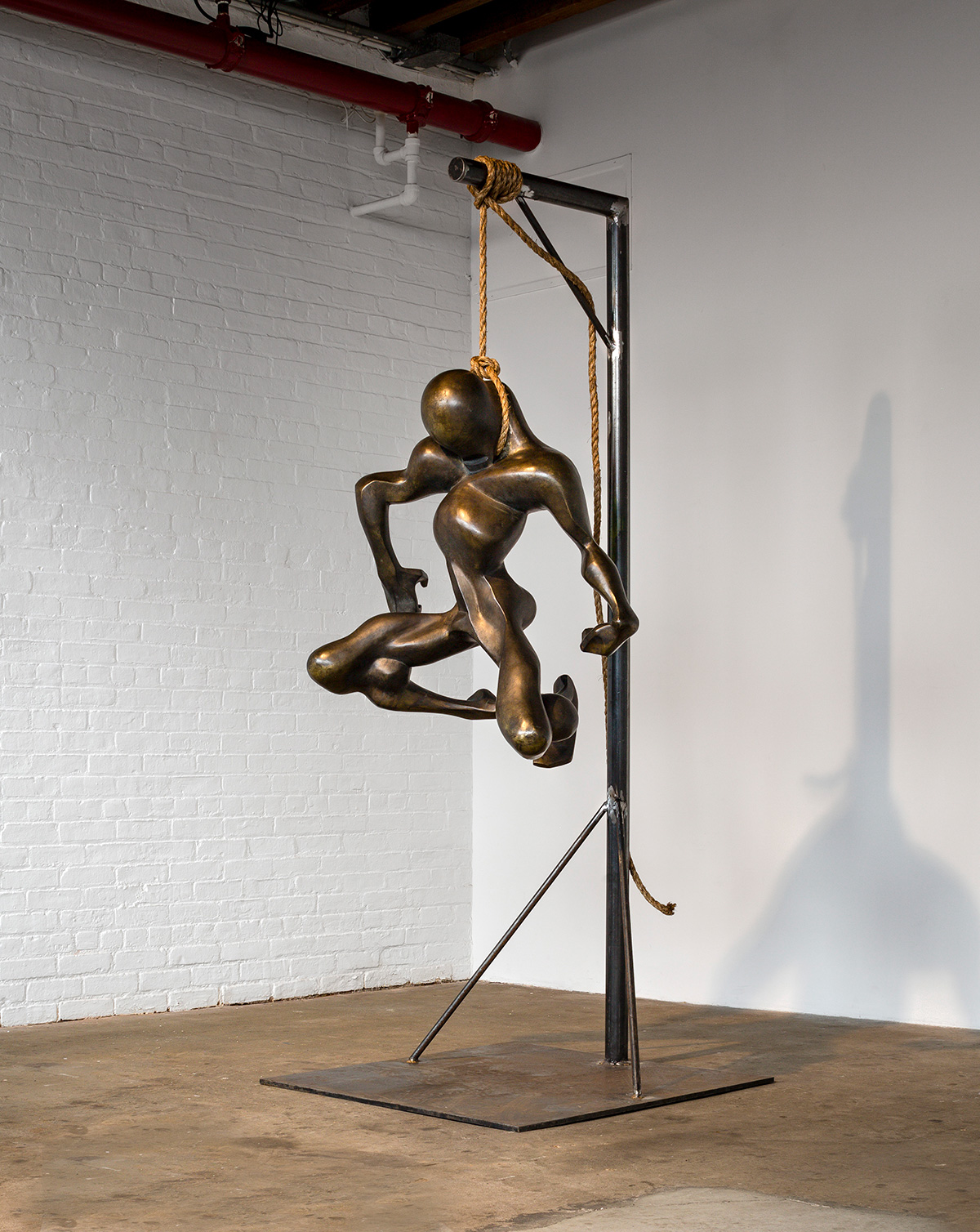Isamu Noguchi originally intended to show Birth (1934) and Death (1934) together in a 1935 exhibition at the Marie Harriman Gallery on 57th Street. Harriman purportedly found the combination too provocative, and so Death was included in the show and Birth was not—which has always been a bit perplexing to those interested in these objects.
Death, or Lynched Figure, was a direct response to the lynchings that plagued America after the Civil War. The widespread media attention to lynchings took far too long to develop. When it finally did, in the 1930s, it contributed significantly to the mainstreaming of the civil rights movement. Noguchi called Death a “social protest,” and it was part of a large and sustained outpouring of artistic activism. Birth, the figure of a woman with her head thrown back, the upper half of her torso arched in effort, recalls masterpieces as diverse as Alberto Giacometti’s Woman with Her Throat Cut (1932) and Gian Lorenzo Bernini’s Ecstasy of St. Teresa (1647-52), placing it squarely in the then-avant garde Surrealist tradition of bridging sex and death. Noguchi later wrote that he was inspired to make it after seeing a woman give birth at a local hospital.
What Harriman must have seen at the time was that by combining Birth and Death (in a Surrealist-style juxtaposition of sex and violence) suggested the possibility of any one of a number of highly inflammatory black man (monel metal) / white woman (travertine) lynching narratives. In retrospect, and in fairness to Harriman, she likely wanted to support the anti-lynching message—and the movement it was part of— without creating a riot, which is why Death was shown alone.
Featuring a recent recreation of the steel gallows from which Death was hung in the Harriman exhibition—emphasizing the direct connection to the horrific reality of lynching—and Birth—in its now simplified (maybe unfinished) state—the current installation approximates the raw and explicit quality of Noguchi’s intent in 1935 as closely as it is now possible to do.


